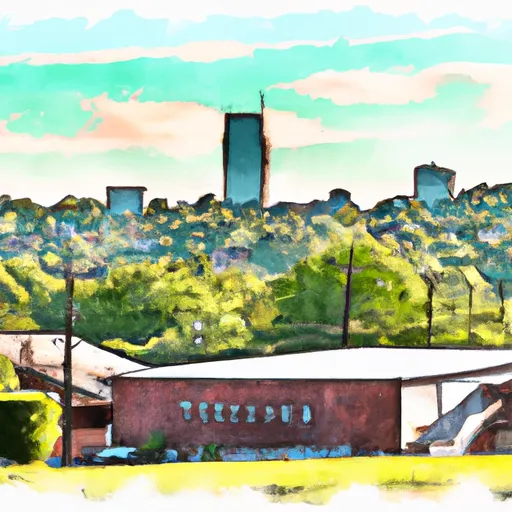-
 Snoflo Premium
Snoflo Premium
Get unlimited access to all our content
With no Ad interruptions! - Start Your Free Trial Login with existing account
Trimble
Eden Index
Climate
7.8
•
Recreation
1.7
•
Community
0.6
•
Safeguard
3.9/10

Trimble, Tennessee, is a charming town located in the northwestern part of the state. The climate in Trimble is classified as humid subtropical, with hot and humid summers and mild winters. Summers are typically long, with temperatures reaching an average high of around 90°F. Winters are relatively mild, with average temperatures ranging from 35°F to 50°F.
Trimble benefits from its proximity to the Obion River, which provides a important hydrological component to the area. The river offers opportunities for fishing and boating, attracting outdoor enthusiasts. Its waters are home to various species of fish, including bass, catfish, and crappie. Additionally, the river serves as a vital water resource for agricultural irrigation and wildlife habitats.
Outdoor recreation opportunities in Trimble extend beyond the Obion River. The area boasts several parks and trails, making it ideal for hiking, camping, and picnicking. Nearby Reelfoot Lake State Park offers a variety of activities, including bird-watching, hunting, and fishing. The lake attracts many anglers due to its abundant population of crappie, bluegill, and bass. With its favorable climate and access to natural water resources, Trimble provides a welcoming environment for outdoor enthusiasts throughout the year.
What is the Eden Index?
The Snoflo Eden Index serves as a comprehensive rating system for regions, evaluating their desirability through a holistic assessment of climate health, outdoor recreation opportunities, and natural disaster risk, acknowledging the profound impact of these factors on livability and well-being.
Climate Health Indicator (CHI): 7.8
Trimble receives approximately
1332mm of rain per year,
with humidity levels near 84%
and air temperatures averaging around
15°C.
Trimble has a plant hardyness factor of
7, meaning
plants and agriculture in this region tend to thrive during the non-winter months.
By considering the ideal temperature range, reliable water supplies, clean air, and stable seasonal rain or snowpacks, the Climate Health Indicator (CHI) underscores the significance of a healthy climate as the foundation for quality living.
A healthy climate is paramount for ensuring a high quality of life and livability in a region, fostering both physical well-being and environmental harmony. This can be characterized by ideal temperatures, reliable access to water supplies, clean air, and consistent seasonal rain or snowpacks.
Weather Forecast
Streamflow Conditions
Hatchie-Obion
Area Rivers
Hatchie-Obion
Snowpack Depths
Hatchie-Obion
Reservoir Storage Capacity
Hatchie-Obion
Groundwater Levels
Recreational Opportunity Index (ROI): 1.7
The Recreational Opportunity Index (ROI) recognizes the value of outdoor recreational options, such as parks, hiking trails, camping sites, and fishing spots, while acknowledging that climate plays a pivotal role in ensuring the comfort and consistency of these experiences.
Access to outdoor recreational opportunities, encompassing activities such as parks, hiking, camping, and fishing, is crucial for overall well-being, and the climate plays a pivotal role in enabling and enhancing these experiences, ensuring that individuals can engage in nature-based activities comfortably and consistently.
Camping Areas
| Campground | Campsites | Reservations | Toilets | Showers | Elevation |
|---|---|---|---|---|---|
| Moodys Landing | 7 | 135 ft | |||
| Shields RV Military - Gulfport NCB | None | 26 ft | |||
| Lake Walker Military - Camp Shelby | None | 239 ft | |||
| Fairley Bridge Landing | 6 | 88 ft | |||
| Airey Lake | None | 170 ft | |||
| Janice Rec.Area | 7 | 116 ft | |||
| Flint Creek Waterpark | 156 | 246 ft | |||
| Cypress Creek Landing | 17 | 103 ft | |||
| Paul B Johnson State Park | None | 245 ft | |||
| Big Biloxi Rec Area | 31 | 50 ft |
Nearby Fishing
Nearby Ski Areas
Catastrophe Safeguard Index (CSI):
The Catastrophe Safeguard Index (CSI) recognizes that natural disaster risk, encompassing floods, fires, hurricanes, and tornadoes, can drastically affect safety and the overall appeal of an area.
The level of natural disaster risk in a region significantly affects safety and the overall livability, with climate change amplifying these risks by potentially increasing the frequency and intensity of events like floods, fires, hurricanes, and tornadoes, thereby posing substantial challenges to community resilience and well-being.
Community Resilience Indicator (CRI): 0.6
The Community Resilience Indicator (CRI) recognizes that education, healthcare, and socioeconomics are crucial to the well-being of a region. The CRI acknowledges the profound impact of these elements on residents' overall quality of life. By evaluating educational resources, healthcare accessibility, and economic inclusivity, the index captures the essential aspects that contribute to a thriving community, fostering resident satisfaction, equity, and social cohesion.

